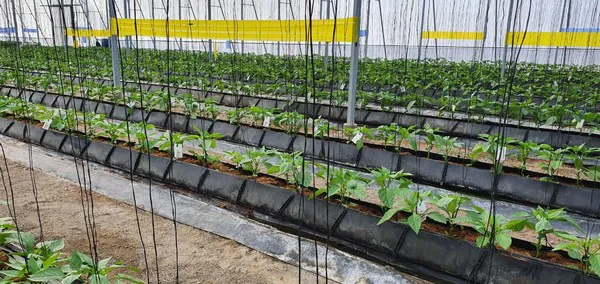The introductory trial of the Integrated Pest Management Program (IPM) in pepper cultivation in the Caribbean is obtaining promising results, according to Luis Espinoza, Biobest manager for Latin America.
"Pepper is an important crop in the Dominican Republic," he said. In addition to being a key ingredient in Caribbean cuisine, it is a valuable export product to the US."
"Since it is grown in plastic and mesh greenhouses, pests such as thrips pose a major challenge (especially since they act as vectors for phyto-viruses such as tomato tanning). Adult thrips lay their eggs under the surface of the leaves, and the pupae and larvae tend to hide inside the flowers, making it difficult to combat them with synthetic chemical sprays."

Producers in the Dominican Republic have traditionally used a wide range of chemical pesticides to control thrips. However, populations of this pest are becoming resistant, which reduces the efficacy of the products. Regulations in the Dominican Republic are not as strict as in the United States but producers have to adhere to US regulatory standards to access that important export market. Therefore, they are under increasing pressure to find alternative solutions.
In order to explore the potential of a fully integrated pest management strategy, Biobest's local distributor - Nonno's Bio Shop - recently conducted a test in one hectare of freshly planted peppers in the province of San Jose de Ocoa.
"The planting took place in mid-January, and the IPM program began three weeks later," Luis stated. We recommended the producer place yellow and blue traps above the crop to monitor the population of thrips and other flying pests, such as whiteflies and aphids."
"Once the culture was inspected, Phytoseiulus-System was released into the red spider foci. Swirskii-System was introduced to control white spider and thrips foci. The predators quickly multiplied by feeding on the larvae of the pests. In order to reinforce the strategy, Orius-System was also introduced to control the last larval stage, as well as the adults."
"Some producers in the Dominican Republic already have experience using Orius-System, but this has been the first time, to our knowledge, that a complete IPM program has been successfully implemented. While it is at a very early stage, initial observations are promising and the producer is looking forward to continuing deploying this strategy in his pepper crops."
For more information:
Lise Verachtert
lise.verachtert@biobestgroup.com
Biobest Group N.V.
Ilse Velden 18 | B-2260 Westerlo
Tel.: +32 14 25 79 80
www.biobestgroup.com
